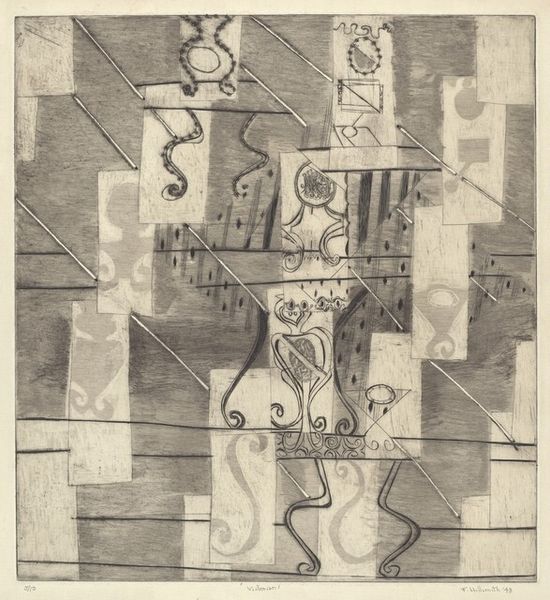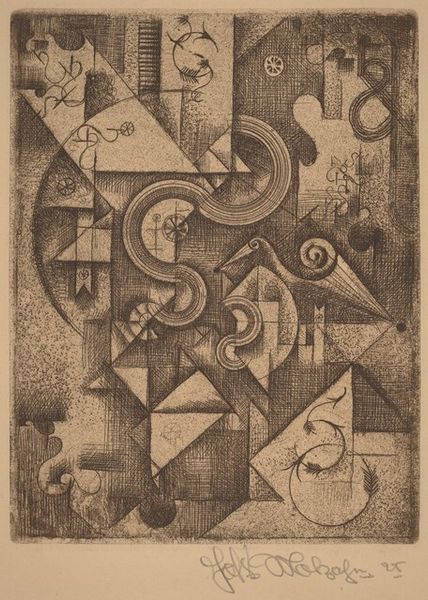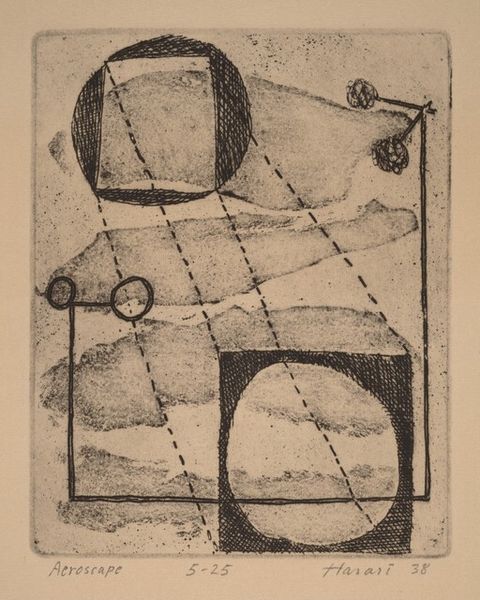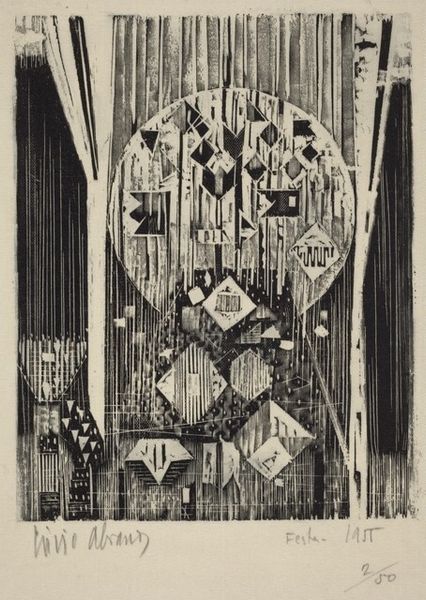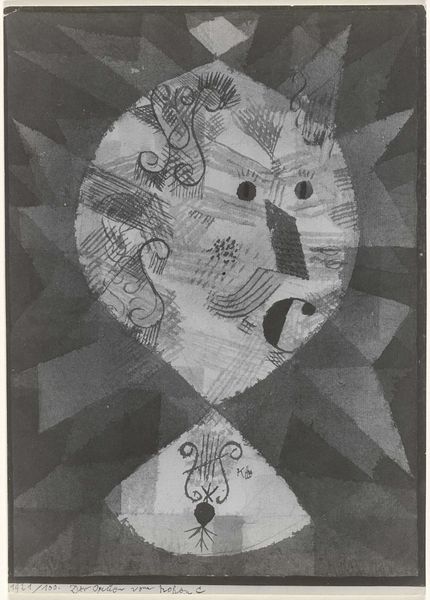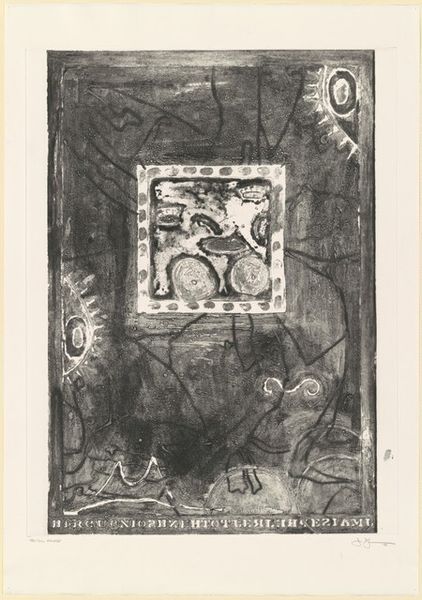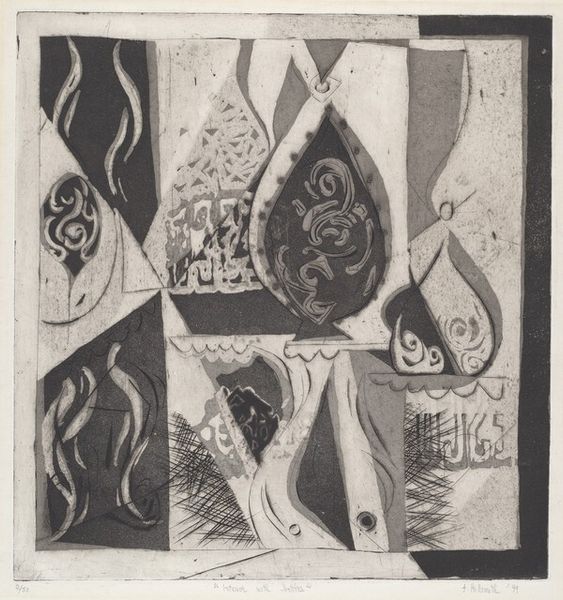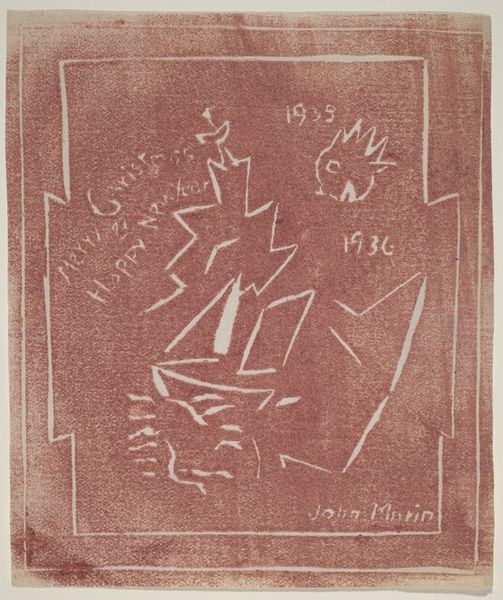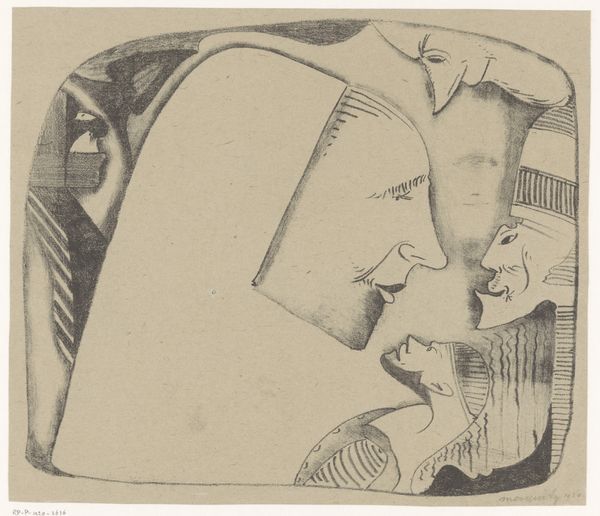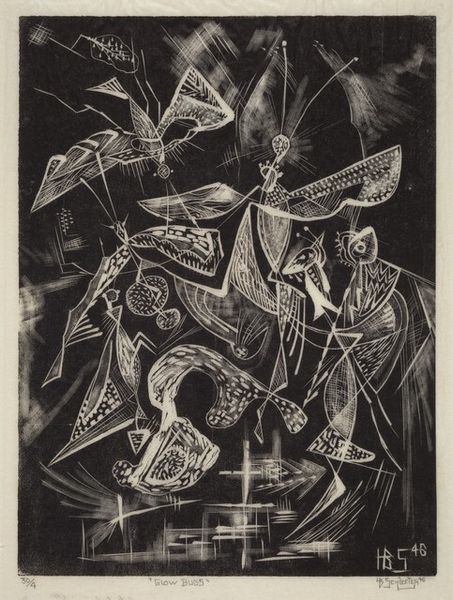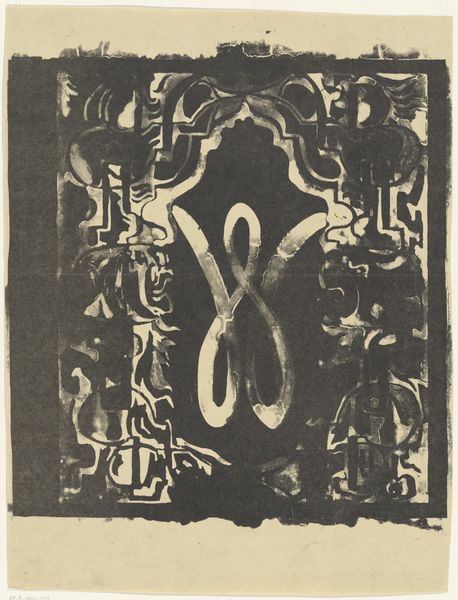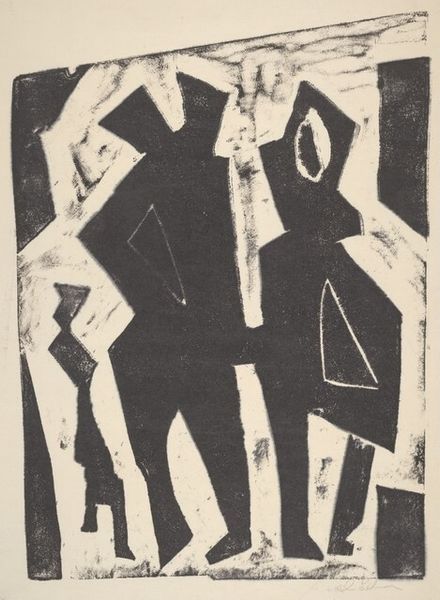
print, etching
# print
#
etching
#
geometric
#
abstraction
Dimensions: plate: 24.7 x 17.5 cm (9 3/4 x 6 7/8 in.) sheet: 32.9 x 25.5 cm (12 15/16 x 10 1/16 in.)
Copyright: National Gallery of Art: CC0 1.0
Curator: Standing before us is Fannie Hillsmith's 1946 print, an etching titled "The Table". Editor: Ooh, chaotic good energy! Like a disassembled jigsaw puzzle of Victorian furniture viewed through a kaleidoscope. But in black and white, obviously. Curator: The etching medium lends a specific textural quality, doesn’t it? Think of how this contrasts with the underlying abstract composition which creates the image. How do the abstracted shapes work together, what sort of emotional responses do they provoke? Editor: It feels domestic, almost feminine, yet there is a strong deconstruction happening. The table itself is broken up. I get hints of a comforting past disrupted by a jarring present, almost like a premonition of changing times post World War II. A bit like seeing your grandma's old china rearranged by a very thoughtful poltergeist. Curator: That sense of domesticity-disrupted resonates with the historical period. While on the surface these objects suggest stability, postwar life contained profound shifts in social structures, cultural memory, and personal experience, and that's all captured by Hillsmith's abstract vocabulary. These geometric forms, these motifs, these objects re-arranged - the artwork uses symbols to convey something in flux. Editor: True! Tables are for gatherings, aren’t they? Food, companionship, and discussions. And the black and white palette, while beautiful, feels somber and even spectral. Curator: It’s about reassembling meanings, wouldn’t you say? Hillsmith transforms what is representational into abstract expression. Instead of presenting the past passively, she interrogates it, and the etching acts as a key, giving a framework for interpreting this transformative era. Editor: You know, you're right. There’s a subversive tension humming beneath the surface. I came in seeing a fragmented mess and leave here perceiving something with depth and profound intention. Now when I think of this print, I'm going to hear that buzzing. Curator: This just underlines that imagery, like memory, isn’t fixed. Let us turn to our next work, and keep thinking about memory.
Comments
No comments
Be the first to comment and join the conversation on the ultimate creative platform.
